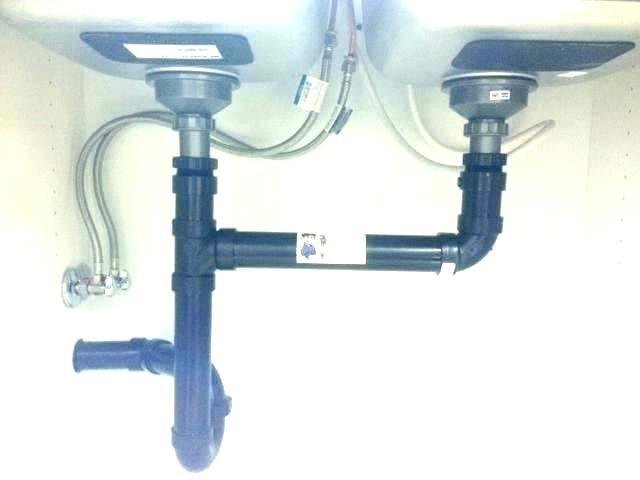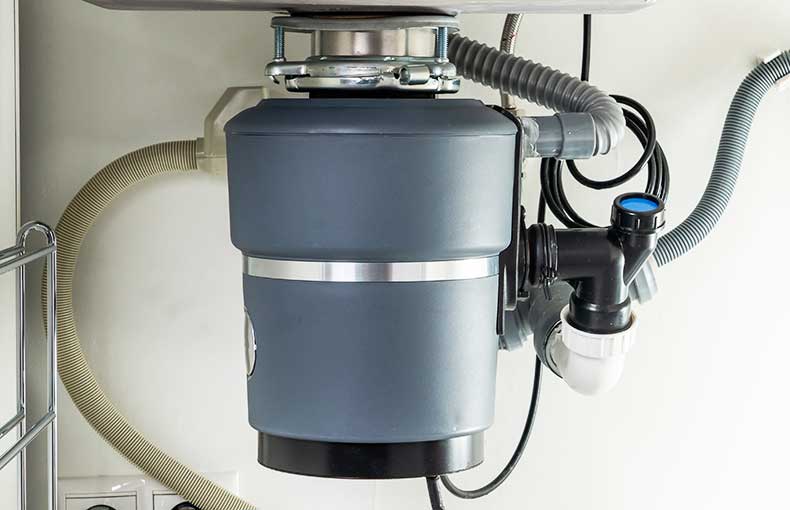Easy to Follow Techniques for Repairing a Leaky Garbage Disposal
Easy to Follow Techniques for Repairing a Leaky Garbage Disposal
Blog Article
Just about everyone is bound to have their own unique thinking with regards to Garbage Disposal Leaking From Bottom.

Waste disposal unit are vital kitchen devices that help in dealing with food waste successfully. However, a dripping waste disposal unit can be an aggravating and unpleasant problem to handle. The good news is, numerous leaks can be taken care of conveniently with a few easy steps. In this write-up, we will go over how to fix a dripping garbage disposal properly.
Intro
Garbage disposals are installed under cooking area sinks and are designed to shred food waste right into smaller sized pieces, allowing it to go through the plumbing system quickly. While these tools are usually reputable, leaks can take place in time because of wear and tear, loose connections, or damage to the system.
Step-by-Step Guide to Dealing With a Leaking Garbage Disposal
Turn Off the Power
Prior to trying any type of repairs, make certain that the power to the garbage disposal device is turned off to stop the risk of electrical shock.
Locate the Leak
Recognize the precise area of the leak and figure out the reason
Tighten up Connections
Utilize a wrench to tighten up any kind of loosened links between the disposal unit and the plumbing system.
Replace Seals or Gaskets
If the leakage is due to worn seals or gaskets, remove the old components and replace them with new ones.
Patching Splits or Openings
For splits or openings in the disposal device, usage epoxy or an ideal patching product to seal the damaged location.
Determining the Source of the Leak
Prior to attempting to deal with a leaking garbage disposal, it is essential to recognize the source of the leak. This can typically be done through visual inspection or by performing easy examinations.
Visual Examination
Check the waste disposal unit unit thoroughly for any indicators of water leakage. Pay attention to areas around seals, gaskets, and link points.
Checking for Leaks
One method to test for leakages is by running water through the disposal system and looking for any visible indicators of leak.
Usual Causes of Leaks in Garbage Disposals
Worn Seals and Gaskets
Seals and gaskets play a critical duty in protecting against water from dripping out of the garbage disposal. Over time, these components can wear away, bring about leaks around the disposal device.
Loose Links
The connections in between the garbage disposal and the pipes system can end up being loosened with time, triggering water to leak out throughout operation.
Cracks or Openings in the Disposal Unit
Physical damages to the garbage disposal, such as splits or holes in the real estate, can additionally cause leaks.
Tools and Products Needed for Dealing With a Leaking Waste Disposal Unit
Prior to starting the fixing procedure, gather the required devices and products, consisting of a screwdriver, adjustable wrench, plumbing technician's putty, substitute seals or gaskets, and epoxy or patching material for fixing cracks or holes.
Examining the Garbage Disposal After Repair Work
Once the repair work is full, examine the garbage disposal by running water with it to make certain that the leakage has actually been dealt with.
Preventive Maintenance Tips to Prevent Future Leaks
To prevent future leakages, it is important to do routine maintenance on your waste disposal unit. This includes maintaining it clean, staying clear of putting non-food products or hard items down the disposal, and occasionally checking for leakages or various other issues.
Final thought
Finally, repairing a dripping waste disposal unit is a reasonably straightforward process that can be finished with standard devices and products. By adhering to the steps outlined in this short article and practicing precautionary upkeep, you can maintain your garbage disposal in good working condition and stay clear of costly fixings in the future.
HERE’S HOW TO FIX YOUR GARBAGE DISPOSAL
WHAT TO DO IF SOMETHING IS STUCK IN YOUR GARBAGE DISPOSAL
If the impeller won’t turn, there’s probably something stuck in the disposal. It could be a steak bone or peach pit, although plumbers report pulling all sorts of inappropriate objects out of disposals, such as bottle caps or aluminum foil. Make sure power to the disposal is off, and look inside to see if you can see the source of the jam.
Never stick your fingers in a disposal. Pull out anything you see with tongs or pliers.
If the disposal still won’t work, it may be time to call a plumber or consider buying a new disposal. GEM Plumbing & Heating is here for all of your garbage disposal needs.
WHAT TO DO IF YOUR GARBAGE DISPOSAL DRAIN IS CLOGGED
Take everything out from underneath your sink and put a bucket or other container under your disposal to catch any water that drains out. Disconnect your disposal from the power supply. If it’s plugged into a wall outlet, unplug it. If it’s hardwired into an electrical box, go to the electrical panel and turn off the breaker for the disposal. Pour ¼ cup of baking soda into the drain, followed by ½ cup of white vinegar. Give the solution a few minutes to fizz and do its work. Look into the disposal with a flashlight to see if you can see an object that might be causing the clog. If you see it, remove it using tongs or pliers. MORE TIPS ON DEALING WITH A CLOGGED GARBAGE DISPOSAL
Never use drain cleaner in a garbage disposal. It can damage the plastic parts inside the disposal. You can also be splashed with the caustic liquid while working to clear the clog. Beware! Never stick your fingers into a garbage disposal. Trust us — not a good idea. In many instances, your dishwasher drains through your garbage disposal. This allows the disposal to grind any large food particles that may be drained out of your dishwasher. There are some jurisdictions, however, where the plumbing code prohibits such a connection. WHAT TO DO WHEN YOUR DISHWASHER DRAINS THROUGH THE DISPOSAL
Run some water in the sink so your plunger has at least a ½-inch of water to create a seal and plunge vigorously up and down several times. You may need to repeat this several times. Run hot water down the drain to clear any residue that remains.

I'm very fascinated by Why Is and I'm hoping you appreciated the entire article. Enjoyed our article? Please share it. Help others discover it. We take joy in reading our article about Tips on Fixing a Leaking Garbage Disposal.
Book A Service Report this page